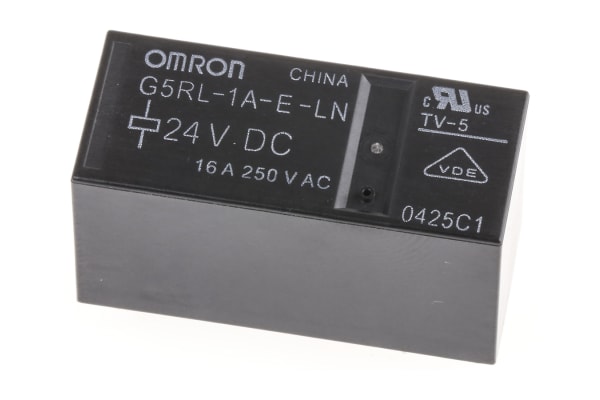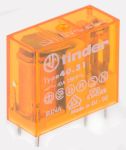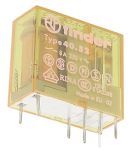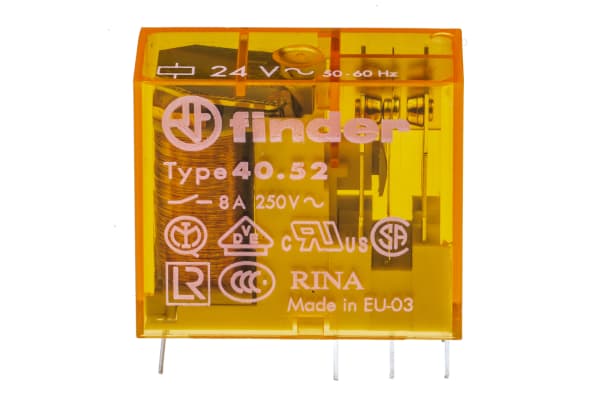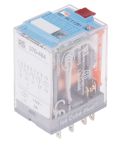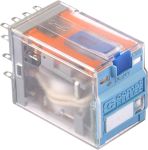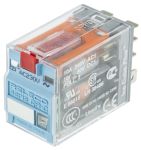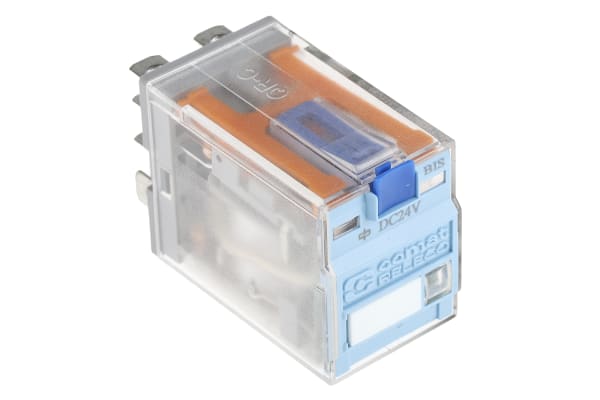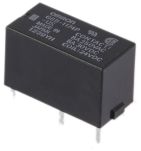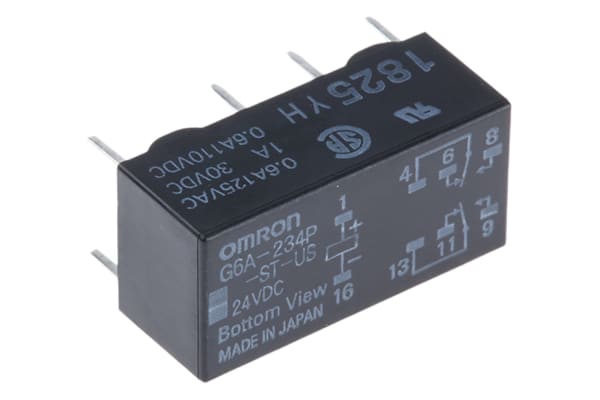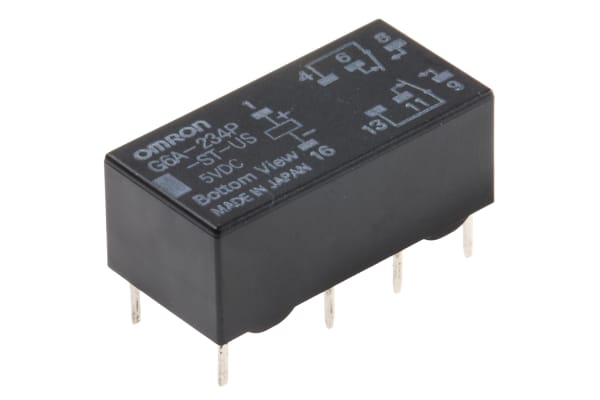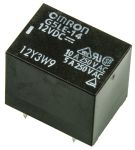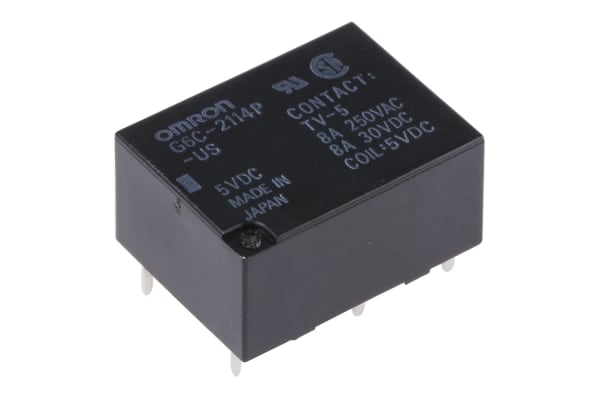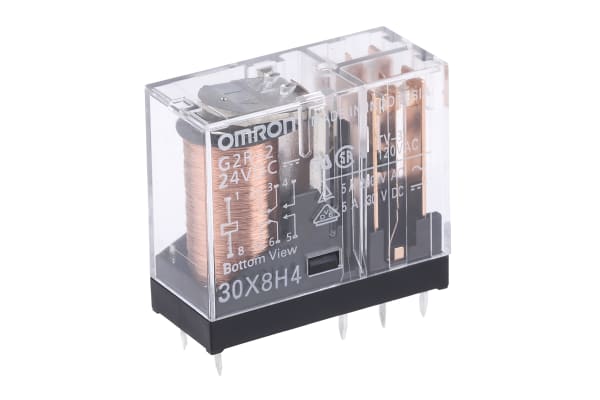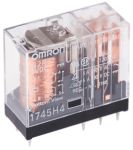Non-Latching Relays
Relays are electrical switches that are operated by electrical impulses with the primary function to open and close a circuit, they can also be referred to as industrial switches. There are 2 main types available, latching and non–latching relays.How do non-latching relays work?Non-latching relays are in a normally closed (NC) position and will stay in this state without power. When power passes through the circuit, the relay switched to a normally open (NO) position by using an internal coil to generate a magnetic force, holding this NO position. Once the current is turned off, it returns to the NC position. This makes non-latching relays well suited to push-button applications like keyboards and micro-controller input buttons.What are non-latching relays used for?Non-latching relays are highly durable and versatile components, making their performance long lasting and suitable for use in a wide range of applications, such as:Automotive enginesHousehold appliancesIndustrial machineryMedical equipmentTelecommunications equipmentWhat is the difference between latching and non-latching relays?Both types of relays in similar in design and function, however, a significant difference between them is that a latching relay will remain in the last position it when it was last powered, whereas a non-latching goes back to its normal position. This makes each more type of relay suitable for different applications. Considerations when selecting a relayWhen choosing a relay, it is important to consider a number of specifications to ensure it is fit for purpose, some factors include:Coil voltage – the required voltage to actuate the switching mechanism. If a voltage is too high this could damage the components, if it is too low then it will not actuate. Contact configuration – This is the state the contacts are in without power. For example SPST, single pole single throw.Contact material – the relay contacts are available in many materials that have certain properties. Common materials are gold, silver, tin oxide and nickel Coil power – the amount of power (watts) the coil operates at. This must match the power in the circuit for correct function. Coil resistance – the amount of resistance (ohms) in the circuit that the coil creates.
-
Omron, 24V dc Coil Non-Latching Relay SPNO, 16A Switching Current PCB Mount Single Pole, G5RL-1A-E-LN DC24
IDR75,206.13 -
Finder, 110V ac Coil Non-Latching Relay SPDT, 10A Switching Current PCB Mount Single Pole, 40.31.8.110.0000
IDR150,936.71 -
Finder, 110V ac Coil Non-Latching Relay DPDT, 8A Switching Current PCB Mount, 2 Pole, 40.52.8.110.0000
IDR162,159.94 -
Finder, 24V ac Coil Non-Latching Relay DPDT, 8A Switching Current PCB Mount, 2 Pole, 40.52.8.024.0000
IDR135,098.32 -
Omron, 12V dc Coil Non-Latching Relay SPDT, 3A Switching Current PCB Mount Single Pole, G6E-134P-US 12DC
IDR116,008.34 -
Releco, 230V ac Coil Non-Latching Relay 4PDT, 5A Switching Current Plug In, 4 Pole, C9-A41X / AC 230 V
IDR437,391.30 -
Releco, 115V ac Coil Non-Latching Relay 4PDT, 5A Switching Current Plug In, 4 Pole, C9-A41X / AC 115 V
IDR158,069.23 -
Releco, 24V dc Coil Non-Latching Relay 4PDT, 5A Switching Current Plug In, 4 Pole, C9-A41X / DC 24 V
IDR274,602.02 -
Releco, 230V ac Coil Non-Latching Relay DPDT, 10A Switching Current Plug In, 2 Pole, C7-A20X / AC 230 V
IDR294,426.23 -
Releco, 115V ac Coil Non-Latching Relay DPDT, 10A Switching Current Plug In, 2 Pole, C7-A20X / AC 115 V
IDR269,357.52 -
Releco, 24V dc Coil Non-Latching Relay DPDT, 10A Switching Current Plug In, 2 Pole, C7-A20X / DC 24 V
IDR307,117.92 -
Omron, 24V dc Coil Non-Latching Relay SPNO, 8A Switching Current PCB Mount Single Pole, G6B-1174P-US 24DC
IDR90,520.07 -
Omron, 24V dc Coil Non-Latching Relay SPNO, 5A Switching Current PCB Mount Single Pole, G6B-1114P-US-SV 24DC
IDR129,224.48 -
Omron, 24V dc Coil Non-Latching Relay DPDT, 2A Switching Current PCB Mount, 2 Pole, G6A-234P-ST-US 24DC
IDR106,673.13 -
-38.80%
Omron, 5V dc Coil Non-Latching Relay DPDT, 2A Switching Current PCB Mount, 2 Pole, G6A-234P-ST-US 5DC
IDR67,339.38IDR55,906.37 -
Omron, 12V dc Coil Non-Latching Relay SPDT, 10A Switching Current PCB Mount Single Pole, G5LE-14 12DC
IDR18,670.42 -
Omron, 5V dc Coil Non-Latching Relay DPST, 8A Switching Current PCB Mount, 2 Pole, G6C-2114P-US 5DC
IDR105,624.23 -
Omron, 24V dc Coil Non-Latching Relay SPDT, 1A Switching Current PCB Mount Single Pole, G5V-1 24DC
IDR34,718.59 -
Omron, 12V dc Coil Non-Latching Relay SPDT, 1A Switching Current PCB Mount Single Pole, G5V-1 12DC
IDR30,103.43 -
Omron, 230V ac Coil Non-Latching Relay DPDT, 5A Switching Current PCB Mount, 2 Pole, G2R-2 230AC
IDR141,181.94 -
Omron, 24V dc Coil Non-Latching Relay DPDT, 5A Switching Current PCB Mount, 2 Pole, G2R-2 24DC
IDR106,358.46 -
Omron, 12V dc Coil Non-Latching Relay DPDT, 5A Switching Current PCB Mount, 2 Pole, G2R-2 12DC
IDR50,032.53 -
Omron, 5V dc Coil Non-Latching Relay DPDT, 5A Switching Current PCB Mount, 2 Pole, G2R-2 5DC
IDR92,932.54 -
Omron, 24V dc Coil Non-Latching Relay SPDT, 10A Switching Current PCB Mount Single Pole, G2R-1 24DC
IDR58,004.17



